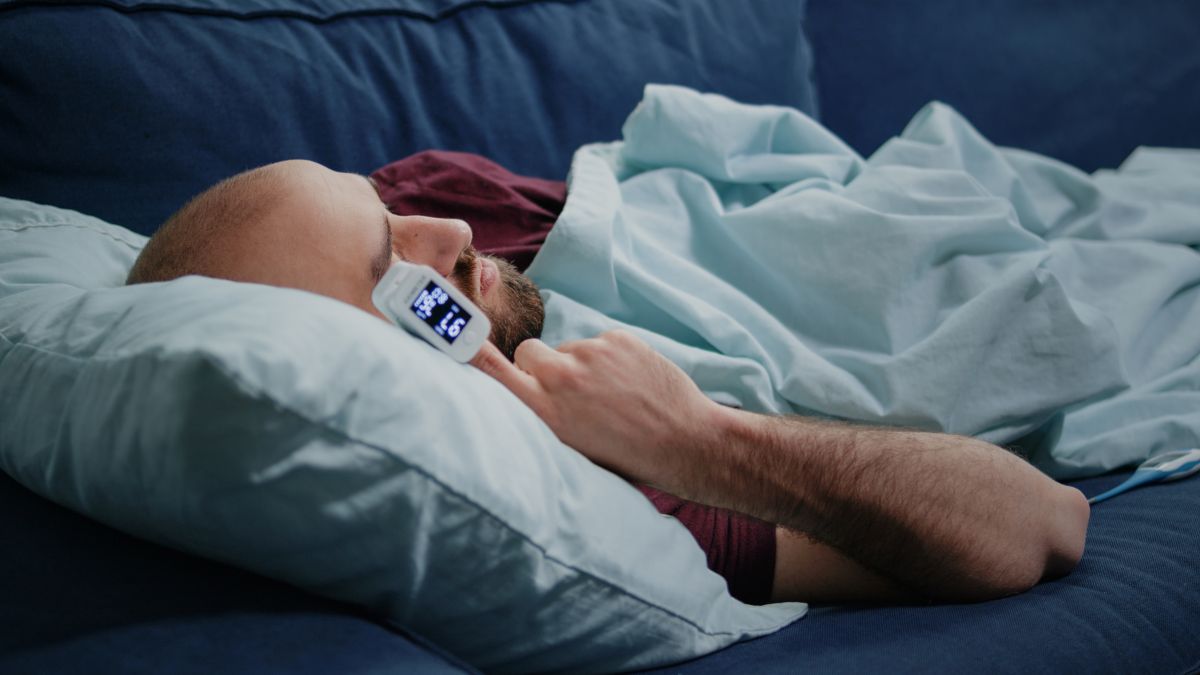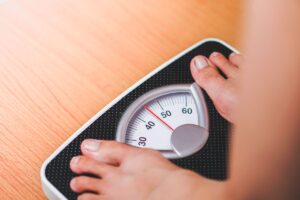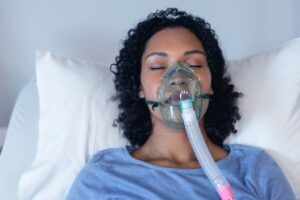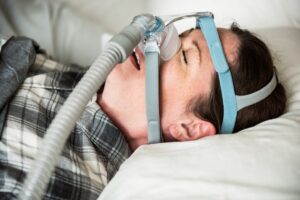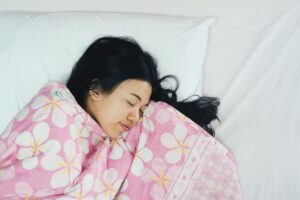Suspect you might have sleep apnea but don’t want to spend the night in a sleep lab? You’re not alone. Many people hesitate to seek a diagnosis because they assume it means an uncomfortable night in a hospital or sleep center.
The good news? You can now test for sleep apnea at home — in your own bed, on your own schedule.
In this guide, we’ll explain how at-home sleep apnea tests work, what they can (and can’t) detect, and how to take the next step toward better sleep.
What Is a Home Sleep Apnea Test?
A home sleep apnea test (HSAT) is a portable, simplified version of a sleep study that you complete at home instead of at a lab. It’s used to detect signs of obstructive sleep apnea (OSA) by monitoring your breathing patterns, oxygen levels, and heart rate while you sleep.
These devices are typically compact and easy to use. Depending on the system, you might wear:
- A small nasal cannula to monitor airflow
- A pulse oximeter on your finger to track oxygen levels
- Chest or abdominal belts to measure effort and movement
Some advanced systems even use wearable sensors or app-connected patches for wireless tracking.
What Does a Home Sleep Study Measure?
While not as comprehensive as an in-lab study, most home sleep tests will measure:
- Breathing rate and effort
- Oxygen saturation (SpO2)
- Airflow through your nose or mouth
- Heart rate
- Snoring intensity or sound
- Position during sleep
These indicators help determine if you stop breathing during sleep — and how often — which is a key marker of sleep apnea.
Related: What Is Sleep Apnea and Why It Shouldn’t Be Ignored
Who Is a Good Candidate for an At-Home Test?
Home sleep apnea tests are best suited for people who:
- Have symptoms like loud snoring, gasping, daytime fatigue, or morning headaches
- Have no other major health conditions that could interfere with sleep
- Are suspected to have moderate to severe obstructive sleep apnea
- Want a more convenient or cost-effective alternative to in-lab testing
A home test may not be ideal if you:
- Have other sleep disorders (e.g., insomnia, restless leg syndrome)
- Suspect central sleep apnea
- Have certain heart or lung conditions
- Need monitoring of brain activity or leg movement
Your provider can help determine if you’re a good candidate for an HSAT.
What Are the Benefits of a Home Sleep Study?
There are several reasons patients prefer an at-home test over a traditional sleep lab:
- Comfortable and private: Sleep in your own bed.
- Cost-effective: Often less expensive than an in-lab study.
- Convenient: Avoid overnight stays and long wait times.
- Accurate for OSA detection: Effective at detecting moderate to severe OSA.
- Quick turnaround: Get results in just a few days.
What Happens After the Test?
Once you complete your at-home sleep study, you’ll return the device (or upload results wirelessly, depending on the system). A sleep medicine provider or trained dentist will then analyze the data.
If the results show signs of sleep apnea, your next steps might include:
- Oral appliance therapy (for mild to moderate OSA)
- CPAP therapy (for more severe cases)
- Lifestyle changes to reduce symptoms
- Further evaluation if results are inconclusive or other disorders are suspected
Related: CPAP Alternatives That Actually Work
Is the At-Home Test Covered by Insurance?
Yes — in most cases, home sleep apnea tests are covered by insurance, including Medicare and many private plans, especially if prescribed by a qualified provider. It’s always best to verify coverage with your insurer before proceeding.
What If I Already Know I Have Sleep Apnea?
If you’ve already been diagnosed but can’t tolerate CPAP or want an alternative to masks and machines, we offer personalized oral appliance therapy that’s discreet, effective, and easy to use.
Take the First Step Toward Better Sleep
If you’ve been snoring, waking up tired, or feeling foggy during the day, don’t ignore the signs. An at-home sleep test is a safe, simple way to find out if sleep apnea is affecting your health.
With a quick evaluation and easy-to-use device, you can finally get answers — and solutions — from the comfort of your own home.
Frequently Asked Questions (FAQs)
Can I test for sleep apnea at home?
Yes. At-home sleep apnea tests are designed to detect signs of obstructive sleep apnea (OSA) from the comfort of your own bed. They’re easy to use and often covered by insurance.
Are at-home sleep tests accurate?
While not as detailed as lab studies, home sleep tests are highly accurate for diagnosing moderate to severe OSA, especially in otherwise healthy adults.
Do I need a prescription for a home sleep test?
Yes. A home sleep test must be ordered by a licensed provider (doctor, dentist, or sleep specialist). They’ll review your symptoms to determine if an HSAT is appropriate.
How long does it take to get results?
Most patients receive results within 3 to 5 days after completing the test, depending on whether the device is mailed back or results are uploaded digitally.
What happens if my test is positive for sleep apnea?
If your results confirm sleep apnea, your provider will recommend a treatment plan. This may include oral appliance therapy, CPAP, or other solutions based on your condition and preferences.

